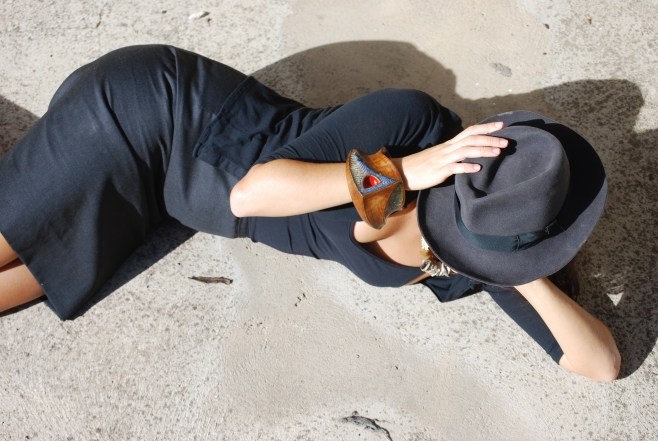
In 2012 I interviewed artist Angki Purbandono for my reportage about contemporary art in Indonesia for Art a Part of Cult(ure). That time I had the chance to snap some pictures around his studio/house filled with the weirdest objects. That was not surprising, considering that Angki is well know for his scannographies, namely giant scans of everyday objects unusually associated, defamiliarized by the size and the black background. Even if his photographs look as if they would have been taken with a complex set of lights, Angki revealed me that his only tool was a normal scanner – which of course, I didn’t fail to photograph. As for Angki himself, you could guess his personality from his body language and shirt. He is a great chap!
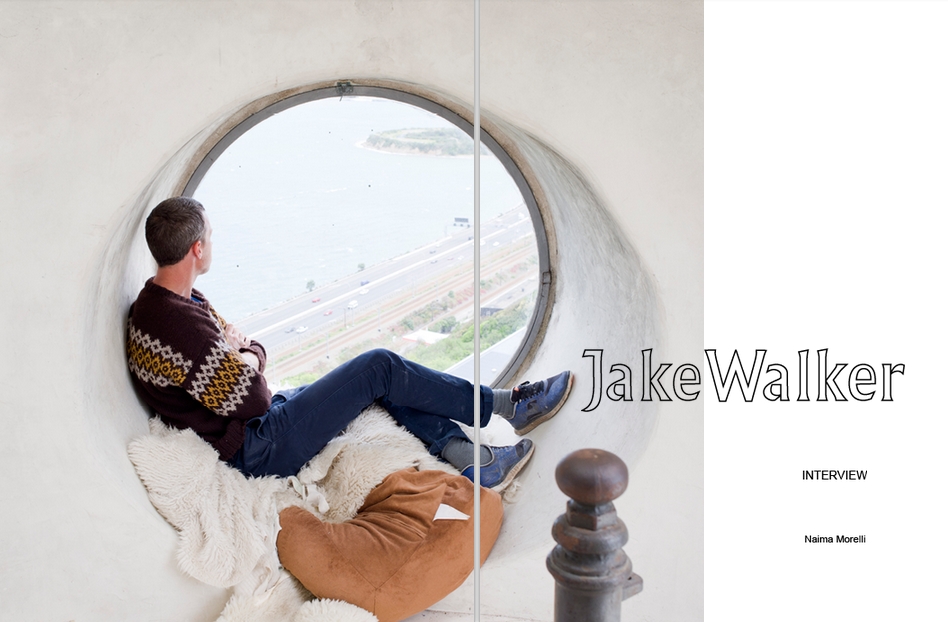
My interview with Melbourne-based Kiwi painter Jake Walker has just been published on Trouble Magazine. The interview is part of my reportage about artists in Melbourne.
Here the link to the interview
Here the link to the online version of the magazine
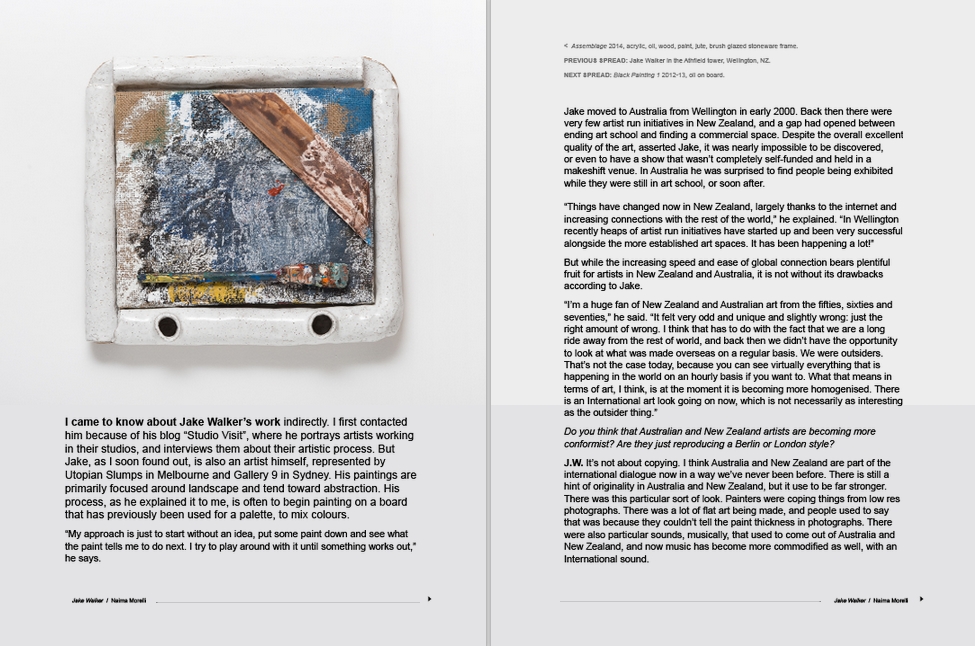

Muchlis Fachri is a young artist based in Jakarta, who is also part of the street artist’s crew called TAS – TAS and the artistic collective Aspaleho. We found each other on Facebook and I was amused by his cartoonish and ironically splatter style, with many references to punk aesthetics and popular culture.
Muchlis explained me that he wants to make art accessible to people. I find this conception resonating very strongly with young Indonesian artist in particular (I remember talking about that a couple of years ago with Agung Kurniawan of Kedai Kebun Forum, one of the first galleries to push forward the idea of accessible art, right in the middle of the painting boom in Yogyakarta).
With his practice Muchlis embodies this democratic idea of art, alternating his graffiti practice with conventional painting and the production of merchandise. Indeed, together with his girlfriend Puji Lestari, he also founded the company JUNK NOT DEAD, producing a range of edgy and offbeat products, from posters to bags and dolls – the patches are definitely on my shopping list next time I’ll pass by Jakarta. With a pulp and excessive imaginary, Muchlis Fachri’s art is definitely an artist to keep an eye on.
Did you have a moment when you knew you wanted to be an artist?
I did actually. In senior high school, I would often made unusual things that were different from the ones of the other students, like bags made of a cardboard or I’d decorate my sneakers with drawings. During my third year I visited an exhibition in the Galeri Nasional and I was stroked by the art exhibited – that show has been fundamental to arouse my interest in painting. When I came back home from the exhibition I was so excited that I started painting on canvases and researching about artists.
Read More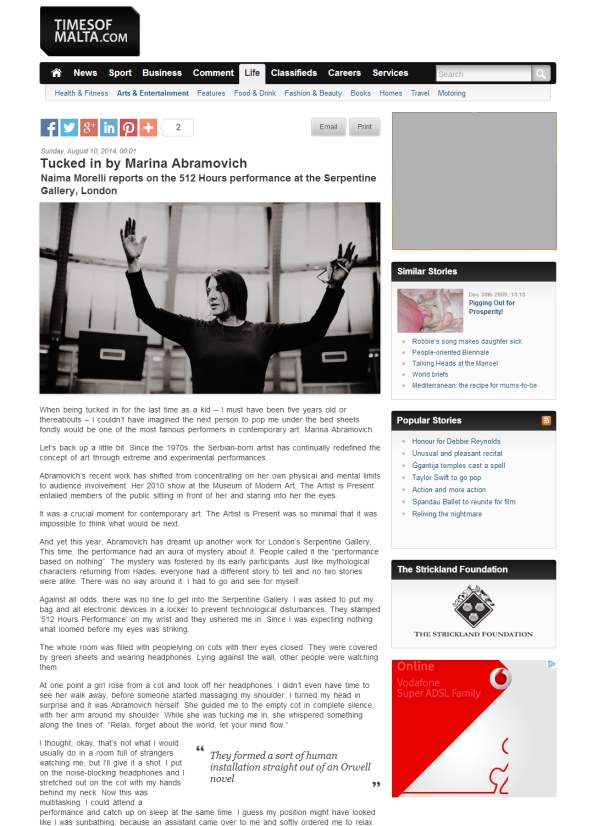
The Times of Malta has just published my review of Marina Abramovic’s 512 Hours performance at the Serpentine Gallery, London.
I’m very happy to have the article published on the leading Malta’s newspaper, because that is where my favourite comic book character Corto Maltese is from!
“When being tucked in for the last time as a kid – I must have been five years old or thereabouts – I couldn’t have imagined the next person to pop me under the bed sheets fondly would be one of the most famous performers in contemporary art: Marina Abramovich…”
Here’s the link to the online version of the magazine
Read More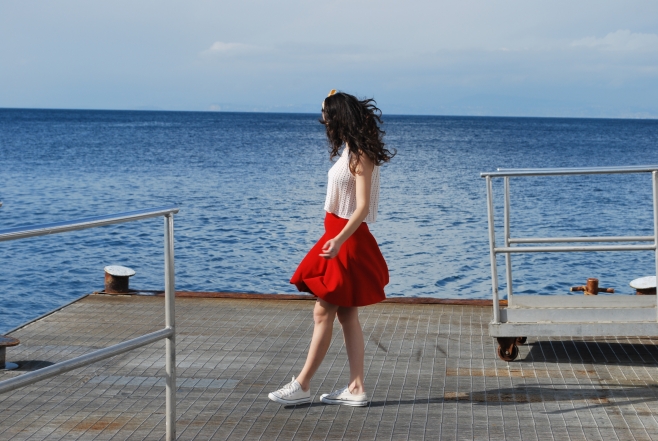
I remember one beautiful evening few years ago in Rome. I was walking with my new friend Francesco, a mime just met at Cinema Trevi. Quite strangely for a mime, he was a chatterbox. I thought that was because he couldn’t talk on stage, so that was his way to vent. Since I just came back from an opening at Gagosian gallery, I was wearing red lipstick, a little back dress and red shoes. Francesco and I keep on whirling in the street paved with cobblestones and he said: “You know what the beauty of life is? That you can live wherever you want. You just have to choose a city, and you can move there anytime.” Then he went on telling me about when he was my age – twenty-one at the time – and he moved to Spain by himself. He was working in a bar near the beach, studying as an actor at the same time. He also told me about that time that he saved a girl abused by a group of guys – an anecdote he clearly unsheathed to impress me. Aside from that, the beautiful thing about Francesco was his constant excitement and exaggerated optimism. He could have been banal and cliché in his representation of happiness, fancying sunsets on the beach and the like, but he was still infusing me merriness and even a little inspiration.
Over the years I kept on asking myself: Is that true? Can you really pick a city you like and decide to move there on the whim?
Read More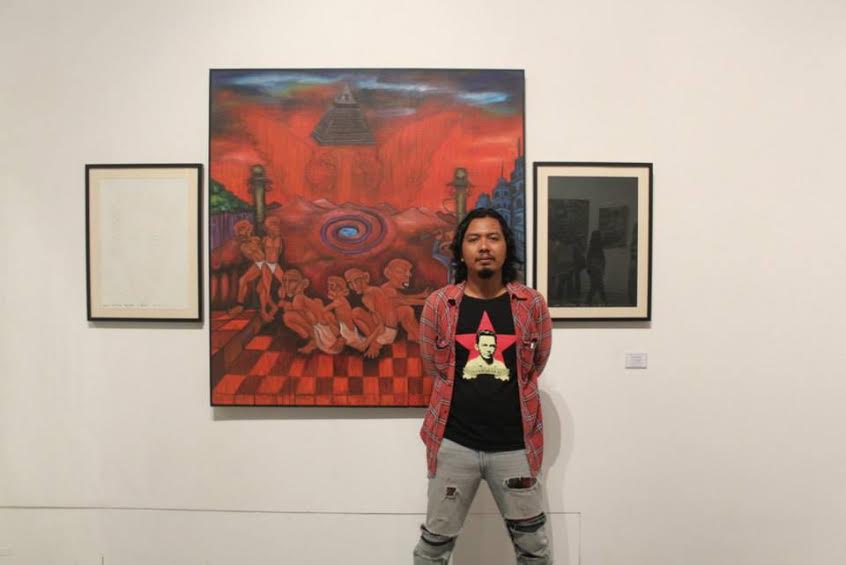
Made Bayak is a Balinese artist, painter, musician, educator and environmental activist.
Through is ongoing project Plasticology – a concept that fuses the words “plastic” and “ecology” – he is exploring Bali’s ecological, social, cultural and political issues. Plasticology develops across different media Plasticology and is associated to an educational campaign against plastic trash.
Plasticology is your long term project that combines art with environmental issues. Bali in fact suffers with plastic pollution. When did you first become interested in that?
I started to make art related to plastic issues in 2001, when I was studying visual art at the Indonesian Institute of the Arts in Denpasar. The first plastic-related project I created was an outdoor installation called PLASTILITICUM. The name is from human history periods, like Megalithic, Palaeolithic, etc. I imagined that in the future people would research about a time in the past where plastic polluted the earth. Therefore the artefacts they will find won’t be stone tools, but plastic objects. At my first solo exhibition at Sika gallery at Ubud in 2008, I created some kinetic objects and sculptures using waste and ready-made materials such as frying pans, wood from the beach, sandals, plastic bottles and broken toys. At the end of 2010 I started experimenting with flatten plastic wastes on a canvas. Since that time I created a series of paintings – I consider them paintings because they are two-dimensional – and I decided to use them for my art project. Plasticology though is not just about paintings and art, but it rather tackles problems directly. We have organized presentations, workshops, river and the beach cleaning up etc.
Read More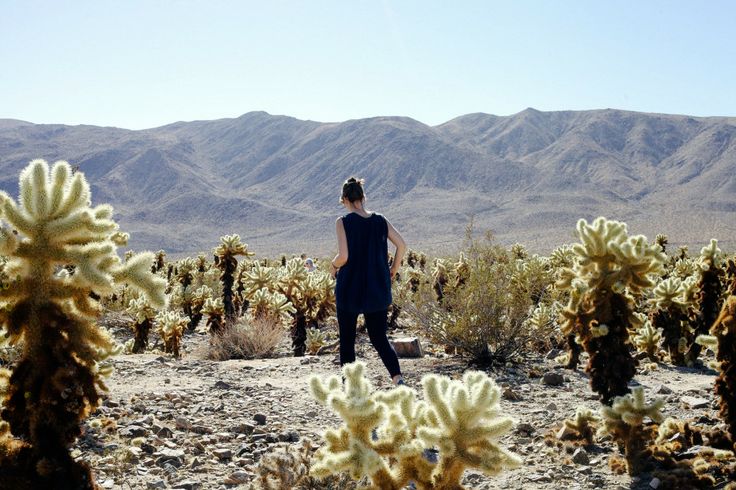
There is a mesmerizing Patti Smith’s song I used to listen to when I was in my teens. It’s called “Land” and tells – in a very surreal way – the story of this guy called Johnny. Since the chord progression wasn’t too complicatedly, I quickly learned to play it on the guitar. There was a particular line that made me pretty excited when I sang it. It was “I hold the key to the sea of possibilities”.
When I was seventeen I had a number of small abilities, but very little how-to knowledge.
My guitar practice alone branched off into my folk Neapolitan repertoire, my intimate Carla Bruni-like songs and my love for punk rock. These three aesthetics were not conflicting to me. That was confirmed by reading on a magazine that Norah Jones also had a punk band. I thought, if she does it, why I shouldn’t? (Well, if you have ever heard me singing and playing, the answer is pretty straightforward).
Way before I would learn the position for a E chord, I was making been comic books. Since I was born, I have never stopped drawing and creating stories. As often happens, I started making comic books since I was in high school and my school mates were my first readers. Never in my life I considered to stop that. Then of course, there was the writing. I was that annoying kid asked by the teacher to stand up and read her essay out loud. I didn’t really like to do that, mostly because my pulp Tarantino-confronts-Romero-on-the-theme-of-abortion like essays were meant to be read with a little verve. Which I completely lacked of . Anyways, at eighteen I started writing for an art magazine and a number of rock and general publications. Around the same time, I started covering every blank spot I could find in the city with graffiti. Man, that was real fun!
Read More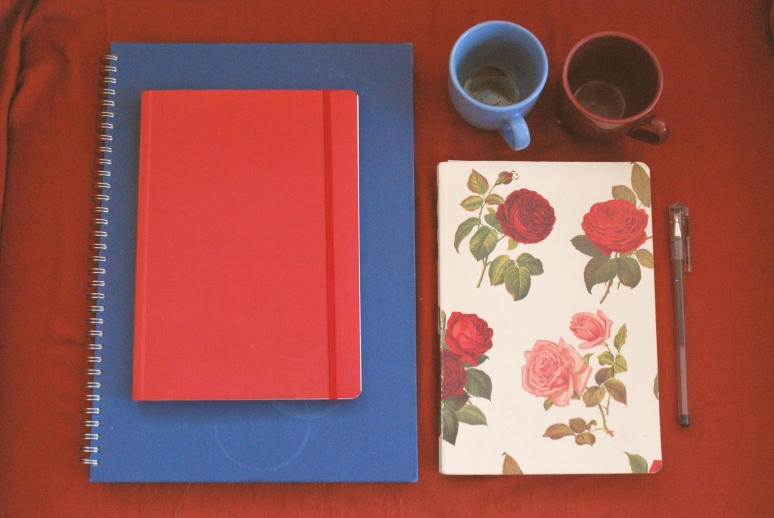
When people ask me about my routine, what I can say is that it is constantly changing. After an intense July, I’m finally back in uneventful Sorrento, Italy, and I couldn’t be happier about it. In sultry Rome I was super-busy setting up the screening of Indonesian video art, so I wasn’t really able to keep a routine, which was good. In fact, my modus operandi entails intense and exciting weeks, followed by weeks of just concentrating getting the “offstage” work done. Which means a solid 8 hours a day. Then I grow restless and I leave for the next adventure. I also like the idea that thanks to the internet you can work remotely to your next mission. There is something inherently powerful in working from a remote costal town in Italy, contacting artists and magazines from all over the world. So that’s how an ideal July-August workday looks like for me (if I manage to retain myself from playing guitar all day)
Read More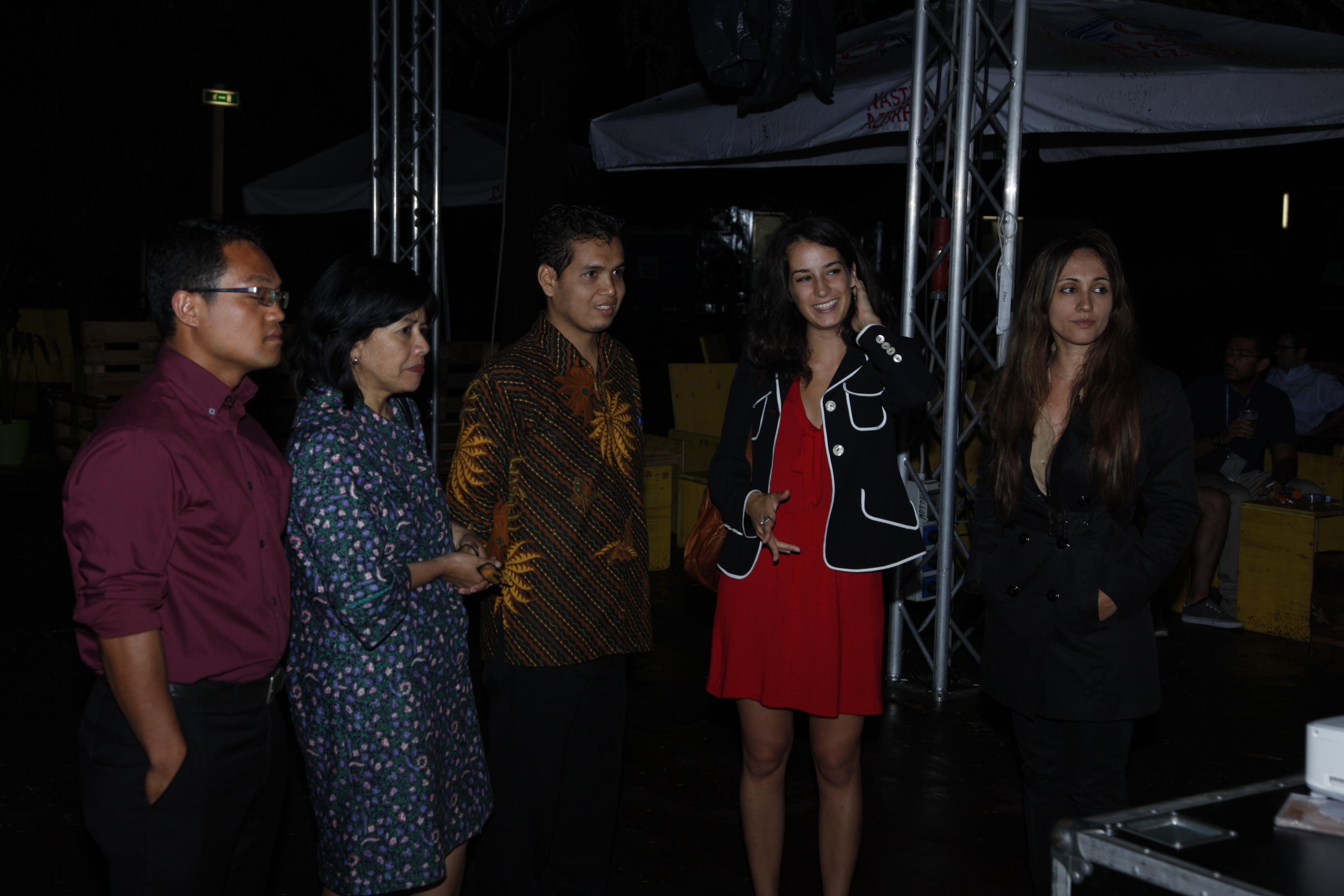
On July 18, right after an unexpected rain in Rome, we held a private screening of “Indonesia – Orienti, Visioni Contemporanee” for three members of the Embassy of the Republic of Indonesia in Italy. MNAO Contemporary’s Chief Curator Valentina Levy and I had an informal chat with Counsellor Nindarsari Utomo and Third Secretary Tinus Zainal. We discussed the difficulty to keep alive tradition in relation of Krisna Murti’s “Empty Theather”. We also dwelt on the value of documentation and national identity with Tintin Wulia’s video and we observed how the young generations of Italians can easily relate to SlavePianos and Punkasila’s work. The Embassy of the Republic of Indonesia in Italy is constantly promoting cultural events across the two countries, and it has been great to see how visual art can be part of that. Here a couple of pictures!
Read More
When it comes to creative jobs in general – and jobs in contemporary art in particular – the word “work” often assumes nuanced meanings.
After all work is not supposed to be fun. It has to be a daily ordeal, something that drains off your love for life, fades the colours around you and makes food tasteless.
Well, I think that today, more than ever, that is simply not true.
If you are into Brain Pickings, TED Talks, School of Life & similaria just like I am – and you probably are since you stumbled on this blog – you listen to people spurring you to make a business out of your passion every day. Nothing seems to be impossible in the era of internet. The sheer fact of owning a computer opens up a myriad of resources and possibilities.
Yet once again I hear people in contemporary art industry saying “Obviously with this project we are not interested in making any profit. We are doing that for the glory.” What followed is usually a resigned nodding: “That’s the way it is.”
The glory? What the hell, I thought, we are talking of contemporary art! If you are in for the glory, you better choose something a little more mainstream. Contemporary art gave fame and glory to very few people. The majority of these people are just a handful of artists, the rest are Hans Ulrich Obrist and Achille Bonito Oliva. Full stop. You may worship Palma Bucarelli (the late charming director of Rome’s National Gallery from 1942 al 1975) just like I do. But you also have to acknowledge that she’s pretty niche. Niche to the point she doesn’t even have a Wikipedia page in English. The best part is that I don’t think she would care about having a Wikipedia page either. She was not in for the glory; working in a museum was her job and it was a real respectable job, the kind that pays the bills – and in her case all those glamorous dresses as well.
